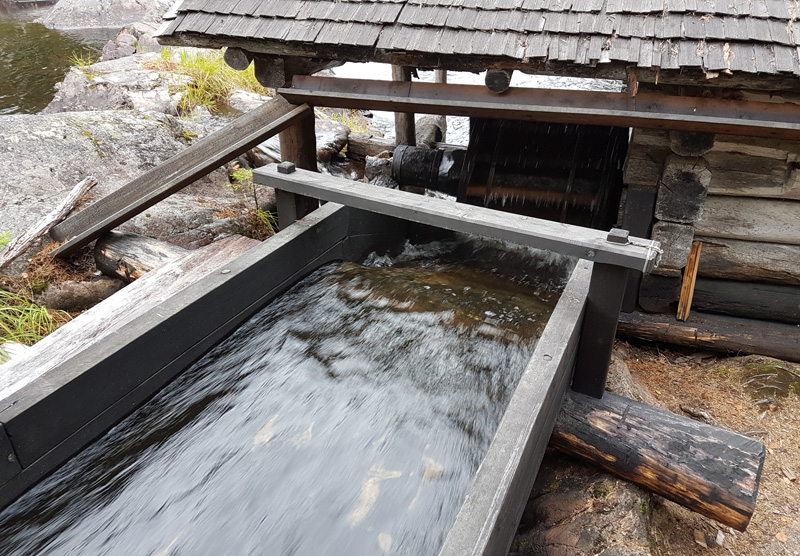- Startpage
- In English
- The Inventory
- Making frieze
Making frieze
Tucking or fulling is a method for processing woollen cloth to make the fabric thicker and more durable. A processed piece of cloth is called a frieze. Before it is tucked it must first be woven.
Location: Nation wide

Photo: Lotta Ståklint.
The method has been known since the Middle Ages, and there are preserved woollen fabrics from this time that show which technique has been used to process the fabric. However, both materials and methods have varied at different times and in different places. In parts of Sweden, the weaving of woollen fabrics for tucking also took place after 1900.
It used to be that the fabric was processed using the feet, which explains why it is called “stamping” in Swedish. Since the 17th century, fabrics have been tucked in special rammers powered by water power. Fabrics could be handed into the rammer for processing. This new method meant that there was significantly greater options regarding method and thickness. It was also possible to choose which colour the finished product would have. Electrical power has gradually replaced water power and there are still some companies left that specialise in processing woollen fabrics for the production of blankets and quilts, among other things.
There are now only a small number of weavers left who are able to use this technique. The craft lives on primarily through the transfer of knowledge from teacher to student in courses. Some folk high schools also offer courses in the preparation of woollen fabrics. Further examples of how knowledge is passed on are open days with demonstrations of how the technique works. In addition, there are several films available online in which tucking is demonstrated, both from Sweden and from other countries.
